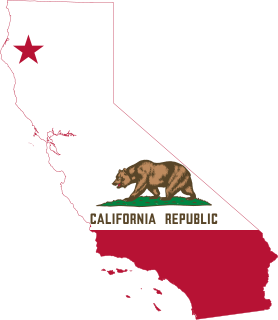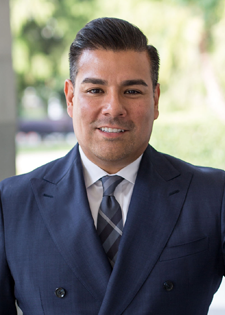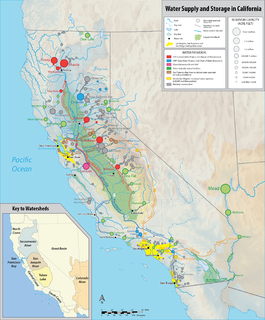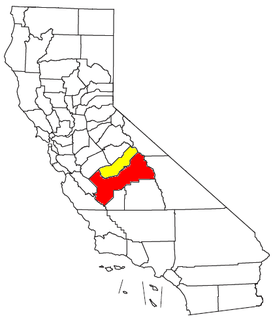
The economy of the State of California is the largest in the United States, with a $3.4 trillion gross state product (GSP) as of 2021. If California were a sovereign nation (2021), it would rank as the world's fifth largest economy, ahead of India and behind Germany. Additionally, California's Silicon Valley is home to some of the world's most valuable technology companies, including Apple, Alphabet Inc., and Meta Platforms. In total, over 10% of Fortune 1000 companies were based in California in 2018, the most of any state.
The California Commission for Economic Development (CED) was established by statute in 1971 to serve as a bipartisan advisory board on economic development issues to the executive and legislative leadership of the State of California. The CED is composed of six members of the State legislature and ten members of the public appointed by the current Governor and represent several industries within California.

The California executive branch consists of elected officers and other offices and officers. The elected executive officers are:
The Global Warming Solutions Act of 2006, or Assembly Bill (AB) 32, is a California State Law that fights global warming by establishing a comprehensive program to reduce greenhouse gas emissions from all sources throughout the state. AB32 was co-authored by then-Assemblymember Fran Pavley and then-Speaker of the California Assembly Fabian Nunez and signed into law by Governor Arnold Schwarzenegger on September 27, 2006.

In California, the Employment Development Department (EDD) is a department of government that administers the Unemployment Insurance (UI), Disability Insurance (DI), and Paid Family Leave (PFL) programs. The department also provides employment service programs and collects the state's labor market information and employment data. The department is one of California's three major taxation agencies, alongside California Department of Tax and Fee Administration and the Franchise Tax Board; in addition to collecting unemployment insurance taxes, the Department administers the reporting, collection, and enforcement of the state's personal income taxes.

Workforce Innovation in Regional Economic Development (WIRED) was a project of the United States Department of Labor. It provided a new approach to workforce and economic development. Through the WIRED model, regions integrated economic and workforce development activities to demonstrate that talent development can drive economic transformation in regional economies across the United States.
The Great Valley Center is a nonprofit organization that supports activities and organizations benefiting the economic, social, and environmental well-being of California's Central Valley. The Great Valley Center operates leadership development programs, organizes conferences and regional events, and provides information and data to the public, nonprofits, policymakers and businesses. The organization has been described as a regional public-policy think tank.

California's interconnected water system serves over 30 million people and irrigates over 5,680,000 acres (2,300,000 ha) of farmland. As the world's largest, most productive, and potentially most controversial water system, it manages over 40 million acre-feet (49 km3) of water per year.

The Leeds City Region is a city region located in Yorkshire, England. It is mainly located in West Yorkshire, but also covers parts of South and North Yorkshire. According to the Office for National Statistics, as of 2017 the city region ranked 2nd behind Greater London for both population and GVA in the United Kingdom. It has a population of 3,063,074 million and a GVA of £69.62 billion.

Metropolitan Fresno, officially Fresno–Madera, CA CSA, is a metropolitan area in the San Joaquin Valley, in the United States, consisting of Fresno and Madera counties. It is the third-largest metropolitan region in Northern California, behind the San Francisco Bay Area and Greater Sacramento. It is also the 49th-largest CSA in the U.S. as of 2010 census.

Megaregions of the United States are generally understood to be regions in the U.S. that contain two or more roughly adjacent urban metropolitan areas that, through commonality of systems—of transport, economy, resources, and ecologies—experience blurred boundaries between the urban centers, such that perceiving and acting as if they are a continuous urban area is, for the purposes of policy coordination, of practical value. The antecedent term, with which "megaregions" is synonymous, is megalopolis, which was coined in relation to the Boston through Washington, D.C. corridor in the Altlantic Northeast, by Jean Gottmann in the mid-twentieth century. America 2050, a project of the Regional Plan Association, lists 11 megaregions encompassing urban regions in the United States, Canada, and Mexico. As of December 2000, these clustered networks of American cities contained an estimated total population exceeding >280 million persons.
Art Pulaski is an organized labor leader in California. Since 1996, Pulaski has served as Executive-Secretary Treasurer and Chief Officer of the California Labor Federation, which represents 2.3 million workers of 1,200 manufacturing, service, construction and public sector unions. He also served as the Executive Secretary of the San Mateo Labor Council in California from 1984 to 1996.
Workforce development, an American approach to economic development, attempts to enhance a region's economic stability and prosperity by focusing on people rather than businesses. It essentially develops a human-resources strategy. Work-force development has evolved from a problem-focused approach, addressing issues such as low-skilled workers or the need for more employees in a particular industry, to a holistic approach considering participants' many barriers and the overall needs of the region.

Richard Juien-Dah Pan is an American Democratic politician and physician who is currently serving in the California State Senate representing the 6th Senate district, which encompasses parts of Sacramento and Yolo counties. He is also a practicing pediatrician.
The Sustainable Communities and Climate Protection Act of 2008, also known as Senate Bill 375 or SB 375, is a State of California law targeting greenhouse gas emissions from passenger vehicles. The Global Warming Solutions Act of 2006 sets goals for the reduction of statewide greenhouse gas emissions. Passenger vehicles are the single largest source of greenhouse gas emissions statewide, accounting for 30% of total emissions. SB 375 therefore provides key support to achieve the goals of AB 32.

The Southern Border Region is one of nine such geopolitical designations in the State of California, United States, used for economic analysis. The region is defined to include San Diego County and Imperial County, each of which borders Mexico. Its largest city is San Diego.
The California Labor and Workforce Development Agency (LWDA) is a cabinet-level California state agency that coordinates workforce programs by overseeing seven major departments dealing with benefit administration, enforcement of California labor laws, appellate functions related to employee benefits, workforce development, tax collection, economic development activities. It was conceived by Governor Gray Davis and was formally created by S.B. 1236 in 2002.
Sustainable Energy Utility (SEU) is a community-based model of development founded on energy conservation and the use of renewables, seeking to permanently decrease the use of source materials, water, and energy. The model prescribes the creation of independent and financially self-sufficient non-profit entities for energy sustainability through conservation, efficiency, and end-user based decentralized renewable energy in an effort to address concerns about climate change, rising energy prices, inequity of energy availability, and a lack of community governance of energy development. The SEU model was developed by Dr. J. Byrne at the Center for Energy and Environmental Policy, University of Delaware. The Foundation for Renewable Energy and Environment (FREE) is implementing versions of the model.

The Northern California megaregion, distinct from Northern California, is an urbanized region of California consisting of many large cities including San Jose, San Francisco, Sacramento, and Oakland. There are varying definitions of the megaregion, but it is generally seen as encompassing the San Francisco Bay Area, the Sacramento area, northern San Joaquin Valley, and the Monterey Bay Area.











